japanese beetle life cycle in missouri
Since larvae are about ½ to 1 inch. Adults emerge between May and July depending on their geographic location.

How To Deal With Common Lawn Problems Lawn Problems Natural Insecticide Lawn
In 1916 in shipments of ornamental plants.

. These grubs grow to about an inch long and lie in a curled position. They migrated from the East Coast and continue to move westward. The first beetles out of the ground seek out suitable food plants and begin to feed immediately.
Treat grubs about four weeks after the adult beetles start to emerge when egg deposits begin to hatch in late July to early August. Each of the first two larval instars stages requires a feeding period of about three weeks. Adult beetles can be damaging to trees and ornamentals.
Japanese beetle has a complete lifecycle with an. Adult beetles are metallic green with brown wings approximately 5-7 mm wide and 8-11 mm long Figure. They over winter as third in star larvae in the soil below the frost line.
Japanese beetle JB is an invasive pest that can be highly destructive to ornamental plants trees shrubs turfgrass and some fruits and vegetables. The larvae feed on roots of grass and other plants close to the surface of the soil. Life Cycle and Pest Identification.
Orkin Termite Treatment Pest Control Exterminator Service. Japanese beetles overwinter in the soil and as soil temperatures warm larvae move closer to the surface and pupate. However most of the damage to ornamentals and turf grass happens during the spring and fall the second year.
Japanese beetles eat more than 300 types of vegetation. Egg stage a larval or grub stage a pupal or resting. However during the second year of the grubs life cycle treatments can be made from April through September.
Japanese beetles often feed in groups of up to 25 on a wide variety of plants. The egg larva and pupa life cycle stages develop underground and unless soil is removed or dug into these life stages will not be seen. Observing Japanese beetles feeding on plants is quite common since the adult beetle feeds on about 300 species of trees shrubs ornamental and fruit trees in addition to vegetable crops.
As soil temperatures warm in the spring the larvae move closer to the soils urface. Mature larvae feed on the roots of host plants causing severe damage over time while adults skeletonize leaves in groups as well as any fruit that may have grown. By midsummer the eggs hatch and the young larvae begin to feed on grass roots.
These beetles have a 3-year life cycle. In spring as the soil. These beetles are now considered to be state-wide in Missouri.
This insect spends about 10 months a year in the ground in the larval stage. Adult beetles generally start feeding on leaves growing on the top of the infected plant which is a good indication of a Japanese beetle infection. Appearance of adult the timing of oviposition and subsequent development have been shown to vary with latitude altitude and also from year to year Fleming 1972.
Japanese beetles have a univoltine life cycleone generation per year. The eggs hatch into white grubs in ten days to two weeks or longer depend- ing on soil temperature. This is when grubs are present in the top inch of the root zone heavily feeding on grass roots and thatch.
They overwinter as third instar larvae in the soil below the frost line. These beetles have a 1-year life cycle. Adults begin to emerge in mid-June females lay eggs in July and August and as eggs hatch in the soil larvae feed on roots and decaying plant material.
In late autumn the grubs burrow 48 inches into the soil and remain inactive all winter. On warm sunny days the new beetles crawl onto low growing plants and warm for a while before taking flight. Their life cycle makes them a major pest for agriculture and landscaping because they eat over 300 types of plants.
University extension and state agriculture departments help people control the Japanese beetle. Life Cycle In most parts of its range the Japanese beetle completes its life cycle in one year but some populations in cooler climates may complete their development in two years Vittum 1986. Wednesday January 19 2022.
Many but not all beautiful insects are good for crops. Stage and the adult beetle stage. It spends the winter 6 to 8 inches below the soil.
Japanese beetle are distinguished from native beetles by the presence of five pairs of white tufts on their abdominal sides and two additional tufts on the abdomen tip. It is now established in most Eastern and some Midwestern states. After mating females burrow a few inches into.
Home Unlabelled Japanese Beetle Life Cycle In Missouri - Why You Re Seeing So Many Japanese Beetles In 2020 Plant Sentry Japanese beetles are destructive plant pests. Surface in the grub stage. JB was likely introduced from Japan into the eastern US.
The grubs resume feeding on grass roots in the spring and then pupate near the soil surface. Adult Japanese beetles appear around the middle of June and they live for about two months. The Japanese Beetle An Invasive Pest Japanese beetles arrived in St.
Larvae that have matured by June pupate and the adult beetles emerge from the last week of June through July. Japanese beetle have one generation per year Figure 2. Description Adult Japanese beetles are one-half-inch long and metallic.
Japanese beetles have a univoltine life cycle one generation per year. As soil temperatures warm in the spring the larvae move closer to the soil surface. The immature stage of the Japanese beetle the white grub typically has a three year life cycle.
Wilting irregular dead patches of turf are the symptoms. In most parts of its range the Japanese beetle completes its life-cycle in one year but some populations in cooler climates may complete their development in two years Vittum 1986. Cycle once every year.
Japanese beetles overwinter as a partially grown grub in the soil below the frost line. The appearance of adults the timing of oviposition and subsequent development have been shown to vary with latitude and altitude and also from year to year Fleming 1972. White grubs should be treated during late July to early August to control any newly hatched larvae.

How Do I Control Japanese Beetles Green Seasons Lawn Tree Service
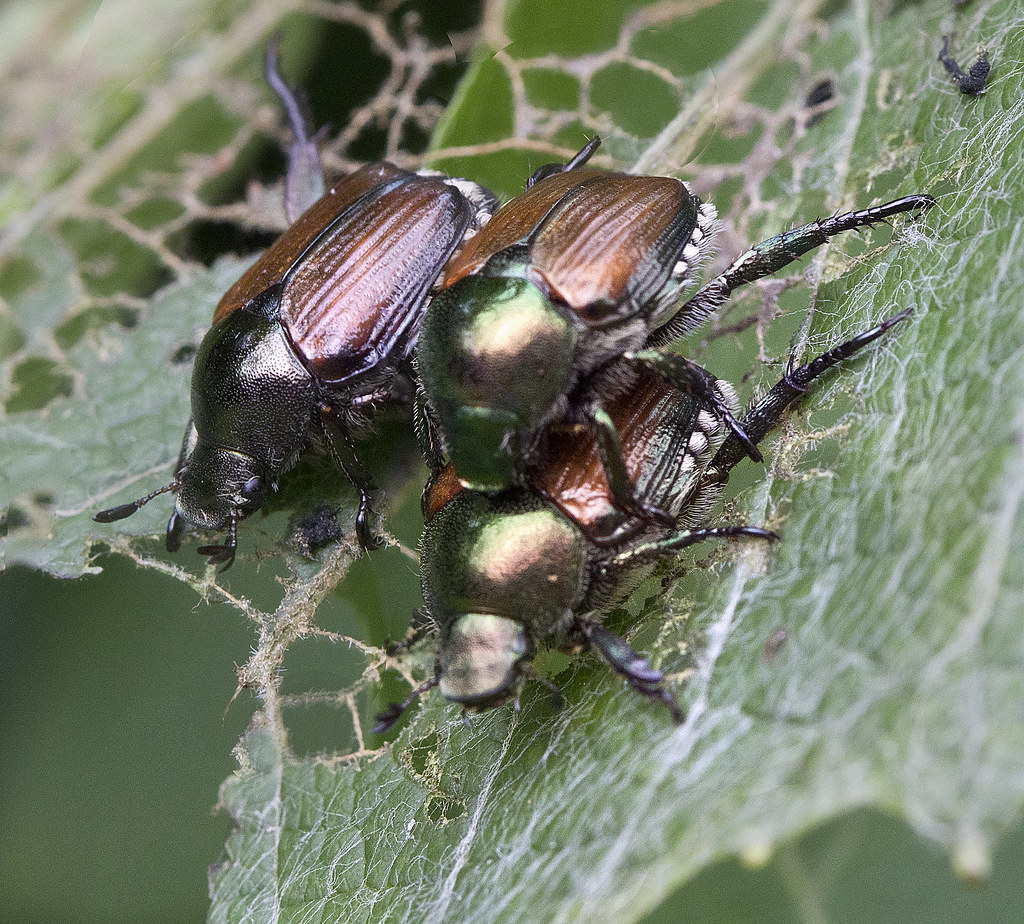
Japanese Beetles In Soybeans Service And Supply Cooperative
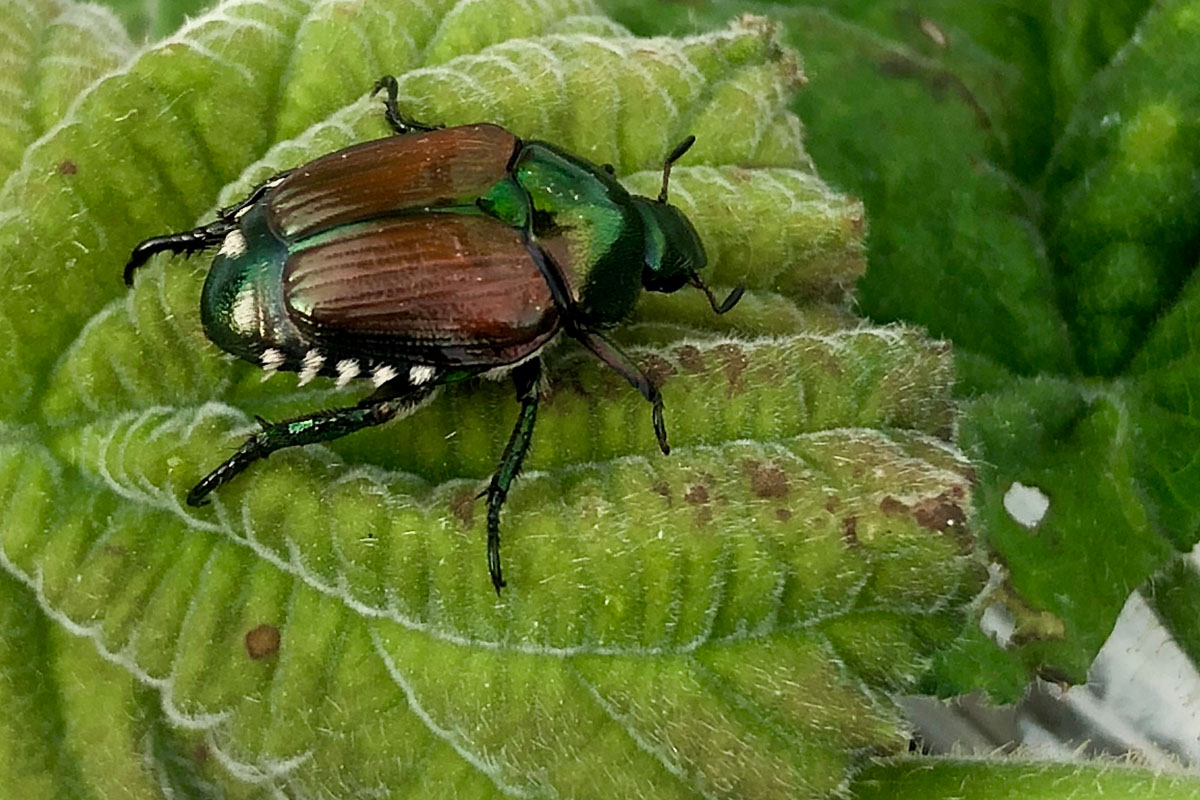
Japanese Beetle Control The Good Earth Garden Center
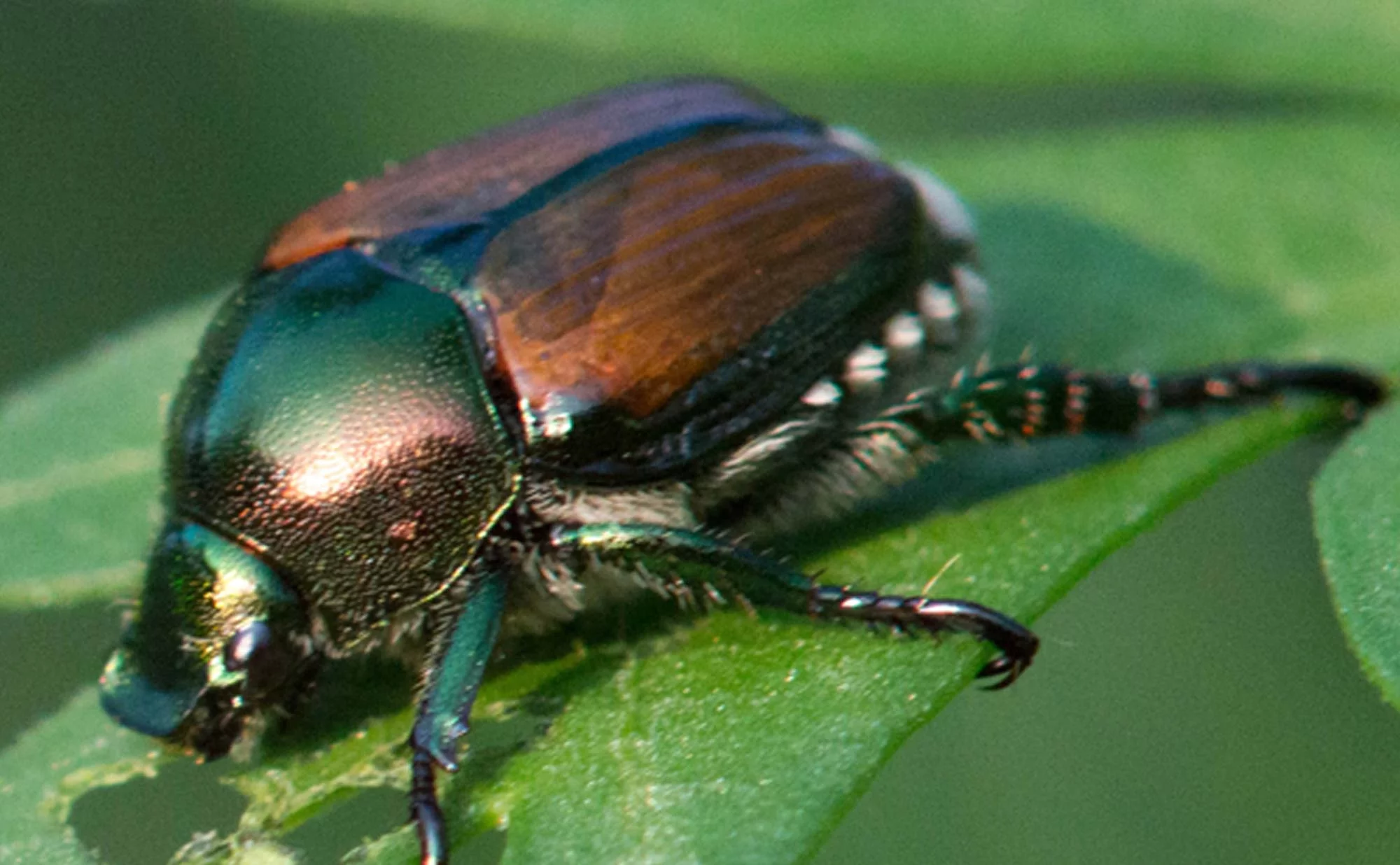
Schedule My Japanese Beetle Treatment Today Rainbow Treecare

Beneficial Insects Insect Eggs Beneficial Insects Insects

Effective Management Remains Elusive For Beetle That Eats Almost Anything

Aggressive Techniques Can Help Combat Invasive Japanese Beetles News Columbiamissourian Com

Do You Have Tunnels In Your Yard If So You Might Be Dealing With Moles And Voles Though Generally Harmless These Varm Mole Removal Mole Natural Insecticide
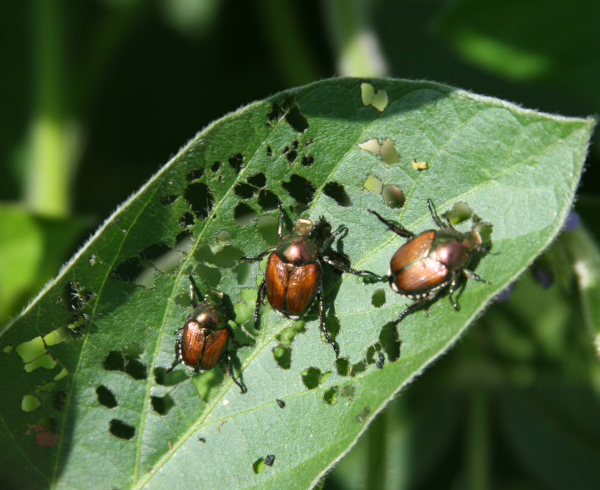
Japanese Beetles On Corn Soybeans

Beneficial Insects Insect Eggs Beneficial Insects Insects

Japanese Beetle Control The Good Earth Garden Center
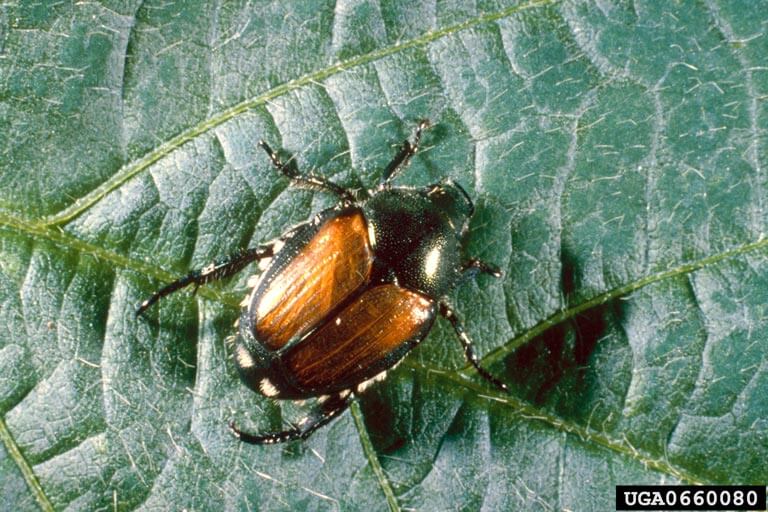
Japanese Beetle Soybean Pest Soybean Research Information Network Srin

Japanese Beetles Headline Potential Problem Pests In 2021 Crops Agupdate Com

Japanese Beetle Soybean Pest Soybean Research Information Network Srin
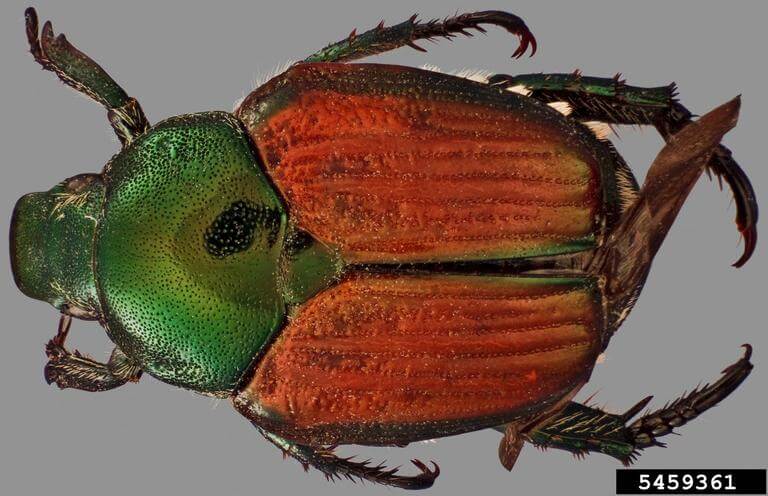
Japanese Beetle Soybean Pest Soybean Research Information Network Srin
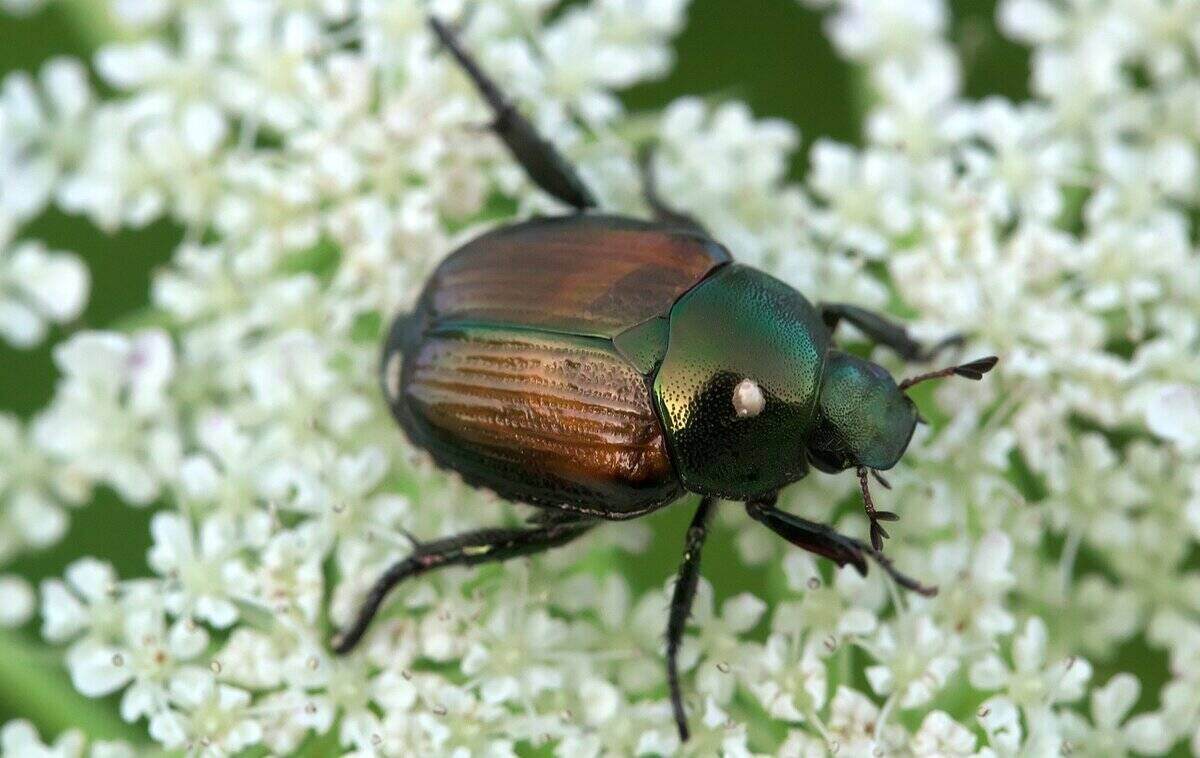
How To Protect Your Trees And Shrubs From Japanese Beetles Lawn Care Blog Lawn Love

How To Prevent Japanese Beetles Lawn Care Blog Lawn Love

Tranquil Water Features For Your Yard Box Elder Bugs Box Elder Overwintering
